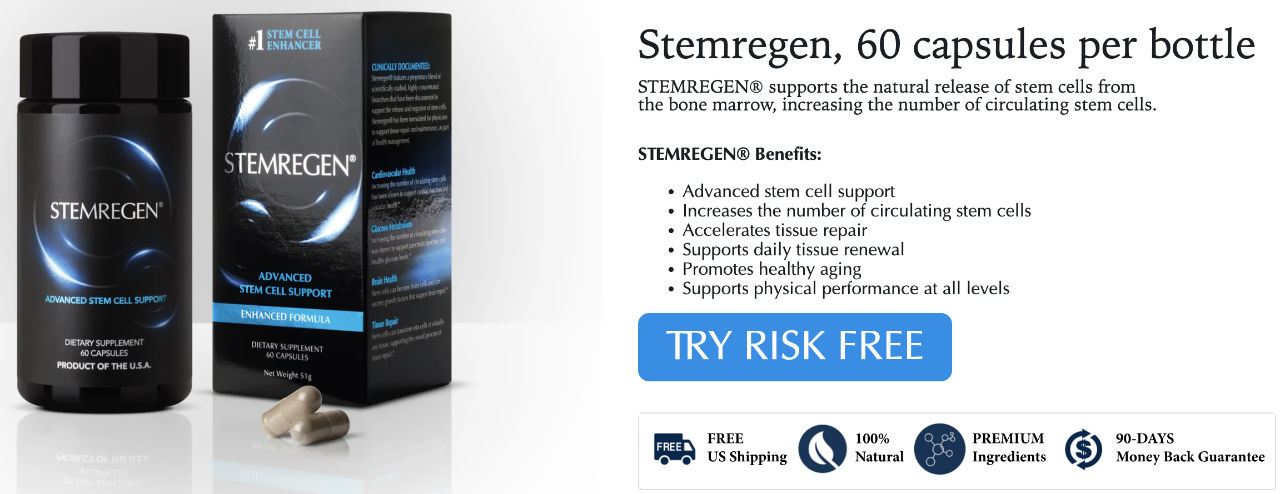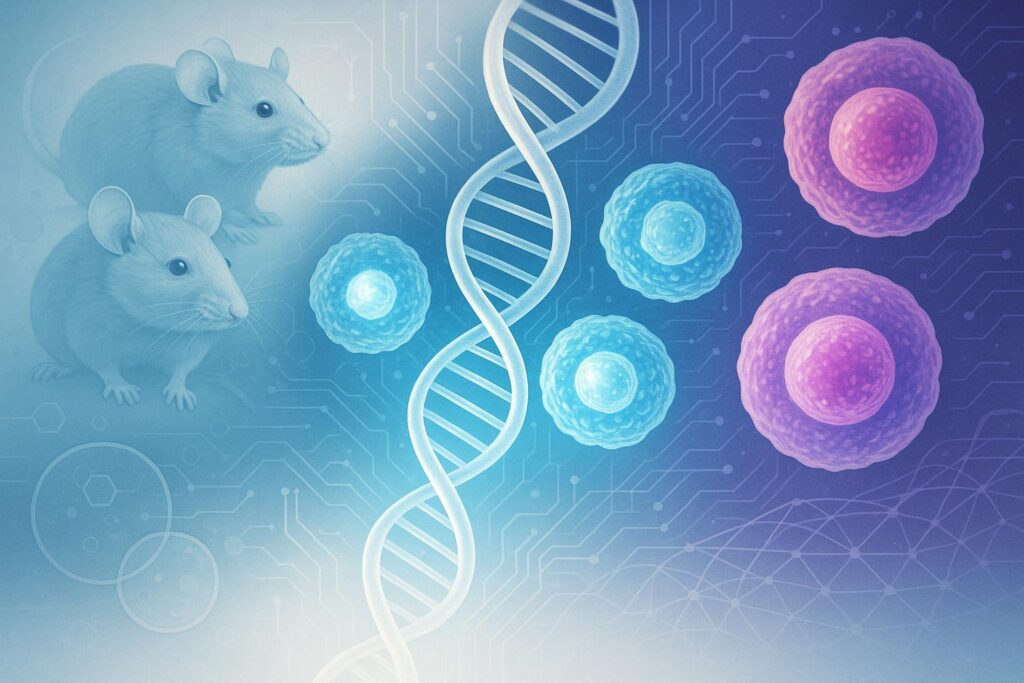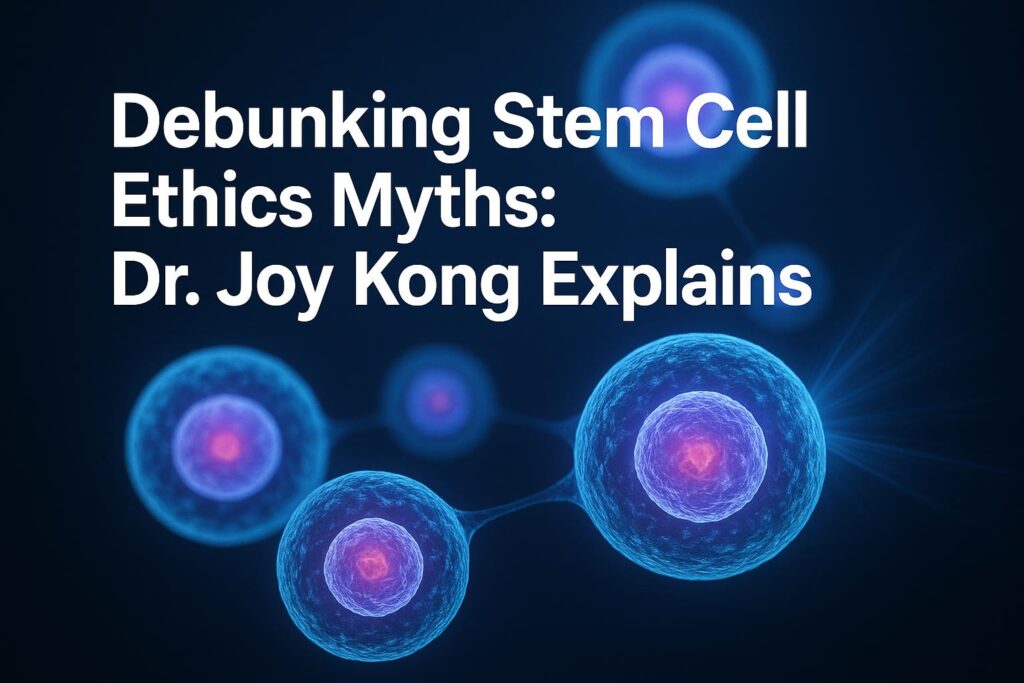A torn meniscus is a common and often debilitating injury, leaving many to wonder about recovery options beyond traditional surgery.
If you’re facing a meniscus tear, you might be asking if there are less invasive ways to heal your knee.
One of the most promising areas of modern medicine is the use of stem cells for tissue repair and regeneration. But does the science support using stem cell therapies for a damaged meniscus?
This article examines the current evidence to help you understand if stem cell treatment can help your knee heal.
What Happens When Your Meniscus Tears?
The meniscus is a C-shaped piece of tough, rubbery cartilage that acts as a shock absorber between your shinbone and thighbone.
Each knee has two menisci—the medial meniscus on the inner side and the lateral meniscus on the outer side.
These structures are critical for the stability and function of the knee joint.
Unfortunately, meniscus injuries are common, especially in sports that involve aggressive pivoting or sudden stops.
A sharp twist of the knee can cause a meniscus tear, leading to knee pain, swelling, and difficulty moving the knee joint.
The primary challenge with a damaged meniscus is its limited ability to heal on its own. The inner two-thirds of the meniscus has a poor blood supply, which means it lacks the essential nutrients and progenitor cells needed for natural repair.
Traditional treatments often involve either physical therapy or surgery to trim or repair the damaged meniscus.
While surgery can be effective, it doesn’t always restore the meniscus to its original strength and can increase the risk of developing arthritis in the knee later in life.
This is where stem cell therapies offer a potential alternative.
How Stem Cells Work for Meniscus Repair

Stem cell research has opened new doors for treating orthopedic conditions, including injuries to the knee. The most common cell types used in these therapies are mesenchymal stem cells (MSCs).
These stem cells are multipotent, meaning they can develop into various types of cells, including cartilage cells (chondrocytes).
The idea behind using stem cell therapy for a meniscus tear is that they can be introduced to the injury site to stimulate healing. Stem cells promote the body’s natural repair processes in several ways.
First, mesenchymal stem cells can differentiate into new meniscus cells, helping to rebuild the damaged tissue.
Second, these stem cells release powerful anti-inflammatory agents that can reduce swelling and discomfort.
Third, stem cells secrete growth factors that encourage existing cells to work more effectively, enhancing the overall repair process.
The goal of stem cell therapies is not just to patch the tear but to encourage genuine meniscus regeneration, restoring the integrity of the knee meniscus. The use of stem cells for tissue restoration is a key focus of regenerative medicine.
Clinical Evidence: Do Stem Cells Help Meniscus Tears?
So, what does the clinical evidence say about the effectiveness of stem cell therapies for a meniscus tear?
Numerous studies have investigated the potential of stem cells to heal damaged meniscus tissue, and the results are encouraging.
A comprehensive review of clinical trials found that stem cell injections can lead to significant improvements in both pain and function for patients with a meniscal tear [1].
One randomized controlled trial studied 55 patients who received a stem cell injection after a partial meniscectomy.
The results showed that patients who received an injection of 50 million mesenchymal stem cells had a 24% increase in meniscus volume after one year, compared to no increase in the control group [1].
Another study combined surgical meniscus repair with the transplantation of stem cells. Two years after the treatment, patients reported significant improvements in pain and daily activities, with no major adverse events [2].
| Study Overview | Patient Group | Treatment | Key Findings |
|---|---|---|---|
| Jacob et al. (2019) [1] | 55 patients post-meniscectomy | Stem cell injection with 50 million MSCs | 24% increase in meniscus volume at 12 months |
| Bian et al. (2022) [2] | 5 patients with complex tears | Surgical repair + stem cell transplant | Improved pain scores and daily living at 2 years |
| Mahajan et al. (2022) [2] | 31-year-old female | Autologous stem cell compound injection | Enhanced meniscus and ligament regeneration at 1 year |
These studies suggest that stem cell treatment can be a viable option for patients with a damaged meniscus.
The stem cells appear to not only alleviate symptoms but also contribute to the structural healing of the meniscus.
What makes these findings particularly encouraging is that the stem cells seem to work through multiple mechanisms simultaneously.
They reduce inflammation, stimulate tissue growth, and help restore the natural architecture of the meniscus.
The success rates vary depending on the study design and patient population, but many trials report significant improvements in both subjective measures like pain scores and objective measures like MRI imaging.
Some patients experience complete resolution of their symptoms, while others see substantial improvements that allow them to return to normal activities.
The stem cells used in these studies were typically harvested from the patient’s own bone marrow or adipose tissue, which reduces the risk of immune rejection and other complications.
While more research is needed, the existing evidence points toward a promising future for stem cell therapies in treating orthopedic conditions.
Stem Cell Injection Procedures for Meniscus Tears
If you are considering a stem cell treatment for your damaged meniscus, it’s helpful to understand what the procedure typically involves.
The most common method is a stem cell injection directly into the affected area of the knee.
The stem cells are usually sourced from the patient’s own body, often from bone marrow or adipose (fat) tissue. This type of stem cell is known as an autologous mesenchymal stem cell.
The process begins with harvesting the stem cells from the patient through a minimally invasive procedure.
For bone marrow-derived stem cells, a small amount of marrow is extracted from the hip bone using a specialized needle.
For adipose-derived stem cells, a small amount of fat tissue is removed through a minor liposuction procedure.
The collected tissue is then processed in a specialized laboratory to isolate and concentrate the stem cells.
This processing typically takes a few hours and involves separating the stem cells from other cellular components.
Once the stem cell concentrate is ready, it is injected into the knee using image guidance such as ultrasound or fluoroscopy to ensure precise placement at the site of the meniscus tear.
The injection itself takes only a few minutes and is performed under local anesthesia. The entire procedure is minimally invasive and is typically completed in a single day, allowing patients to return home the same day.
After the stem cell injection, patients are usually advised to follow a specific rehabilitation protocol that includes rest, physical therapy, and gradual return to activities to protect the healing meniscus and strengthen the surrounding knee structures.
Benefits and Limitations of Stem Cell Treatment
Stem cell therapies offer several potential benefits over traditional surgery for a damaged meniscus.
The procedure is significantly less invasive than arthroscopic surgery, which means a lower risk of complications, reduced scarring, and a faster recovery time.
Patients typically experience less post-procedure pain and can often return to normal activities more quickly.
Because the stem cells promote natural healing processes, the repaired meniscus tissue may be stronger and more resilient than tissue that has been surgically trimmed or sutured.
Another significant advantage is that stem cell treatment may help prevent the long-term degeneration of cartilage that can lead to osteoarthritis.
Traditional meniscectomy, where part of the meniscus is removed, can alter the biomechanics of the knee and accelerate wear on the remaining cartilage.
Stem cells, on the other hand, work to restore the natural structure and function of the meniscus, potentially preserving the long-term health of the knee.
However, it is important to acknowledge the current limitations of stem cell therapies. These treatments are still considered experimental by many regulatory bodies, including the FDA, and they are not always covered by insurance plans.
The out-of-pocket costs can be substantial, ranging from several thousand to tens of thousands of dollars.
The effectiveness of the treatment can vary significantly depending on factors such as the severity and location of the meniscus tear, the patient’s age, overall health, and activity level.
Additionally, while the research is promising, long-term studies are still needed to fully understand the durability of stem cell repairs.
Some patients may require multiple treatments to achieve optimal results, and there is no guarantee of success for every individual.
The field of regenerative medicine is constantly evolving, and ongoing clinical trials will continue to refine the protocols and improve outcomes for these applications in orthopedic medicine.
Making the Decision: Is Stem Cell Therapy Right for You?
Deciding on the right treatment for a torn meniscus is a personal choice that should be made in consultation with an orthopedic specialist.
If you are seeking an alternative to surgery, a stem cell treatment may be an option worth exploring.
A thorough evaluation of your knee and a discussion of your treatment goals will help determine if you are a good candidate for stem cell therapy.
The future of meniscus repair looks bright, with stem cells at the forefront of innovation.
References
[1] Jacob, G., Shimomura, K., Krych, A. J., & Nakamura, N. (2019). The Meniscus Tear: A Review of Stem Cell Therapies. Cells, 9(1), 92. https://pmc.ncbi.nlm.nih.gov/articles/PMC7016630/
[2] Bian, Y., Wang, H., Zhao, X., & Weng, X. (2022). Meniscus repair: up-to-date advances in stem cell-based therapy. Stem Cell Research & Therapy, 13(1), 207. https://stemcellres.biomedcentral.com/articles/10.1186/s13287-022-02863-7



